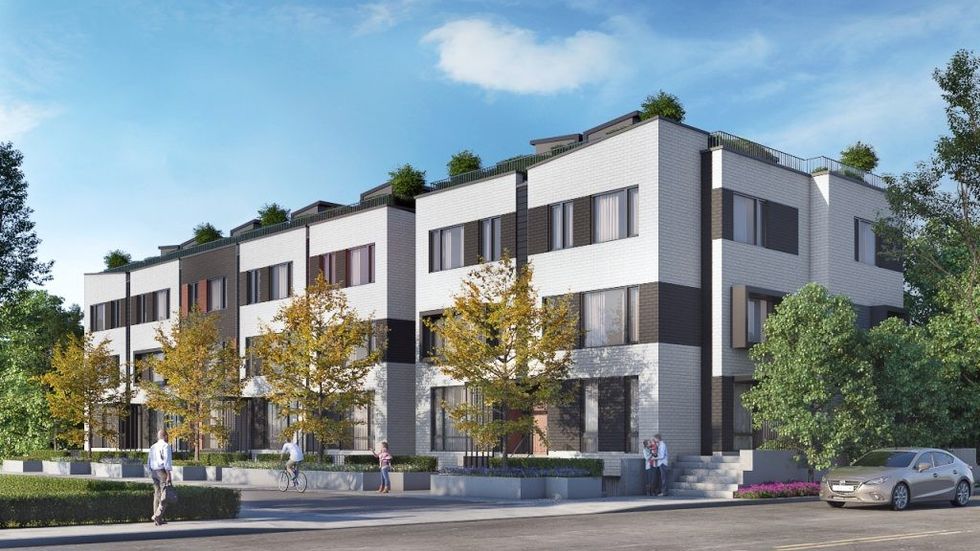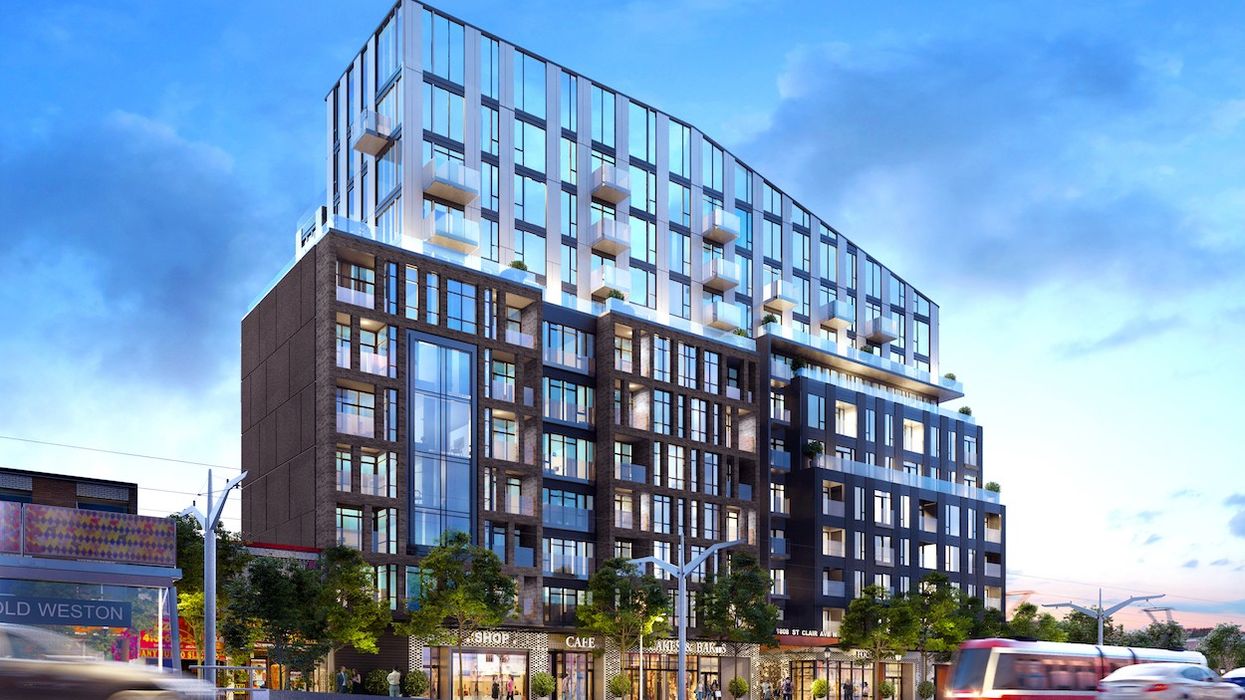Towers we’ve got in the hundreds. Low-rise abounds in every direction. What’s missing in Toronto is mid-rise buildings, those four- to 12-storey structures that can serve any purpose, residential and commercial included. It’s not that they don’t exist; they do, of course, and in large numbers.
The issue is how rarely mid-rise is considered when it comes to new residential construction. Yes, there are mid-rise condos throughout the city, but more often than not, they fall victim to the consequences, intended or not, of NIMBY opposition as well as rules and regulations covering everything from parking requirements to emergency exits. In other words, the city has made mid-rise condos so problematic developers run screaming from the prospect.
READ: Diverse Builds Help Boost New Home Sales In Toronto
The most infamous example was a six-storey condo at 109 Ossington Ave. When it was first proposed in 2012 the neighbours were up in arms. Though it replaced a decidedly unlovely auto-body shop, the neighbours worried that it was too tall, that it would increase traffic and change the character of the area, which to anyone else seemed a good idea. Ultimately, the NIMBY forces failed in their effort to shut down the project, but their objections slowed the approval/construction process by years and cemented the sense that mid-rise just wasn’t worth the hassle. Today, the building is one of the few on Ossington with architectural merit.
Christopher Hume And Diamond Kilmer On The Missing Middle
Though Toronto’s planning department recognizes the value of mid-rise, especially in areas where downsizing empty-nesters like the idea of staying in the neighbourhood but not in their houses. At one point, there was even talk about making mid-rise development as-of-right, which would made it that much more attractive. But that didn’t happen and getting obviously desirable projects approved remains as onerous as ever.
READ: Zero Carbon Buildings Are A Win-Win For Environment And Real Estate
Still, things have improved. Mid-rise condos can now be found on Queen, College, Dupont and many other streets across Toronto. One of the most exciting is Reunion Crossing, a proposed redevelopment of a site at St. Clair Ave W. and Old Weston Rd. It combines an 11-storey condo slab with a 100-odd townhouses. Occupying what was a former industrial property, the project is one of several that are bringing new life to a part of the city that has been overlooked for decades.

Even more important, the developer, Diamond Kilmer, has brought a rare sense of social awareness to the scheme. In addition to an enlightened approach to the layout of the complex, it also includes a block of affordable units that will be built with Habitat for Humanity. Even the full-market units are priced well below what one might otherwise expect in Toronto.
The most likely buyers, especially for the townhouses, will be families with kids, not investors looking to make an easy buck. In other words, this development is aimed at an audience that differs from the norm; rather than usual investors or young professionals, this project is intended for occupants who would make a life for themselves. The units are not just machines for living in, they are places where residents can put down roots and become part of a community. As architect Ralph Gianonne says, it’s designed to be an element of something larger, a living neighbourhood as well as a city.
READ: Family-Sized Condo Units Are Changing Toronto’s Real Estate Market
The kid-friendly development will include kids’ play areas, indoors and out, and a public splash pad. It will also have its own woonerf, a so-called “living street.” Pioneered in the Netherlands, these are roadways shared by cars and pedestrians equally. Lacking curbs and traffic signs, these arteries work because they demand eye contact between drivers and pedestrians. Toronto has only three or four woonerfs. The most recent, Trolley Lane, was built by Waterfront Toronto in the West Don Lands.

Details such as these are clear signs of Diamond Kilmer’s desire to move the condo industry beyond the same old, same old. Even more important, unit prices will be kept lower than usual, which means buyers need not be one-percenters. In other words, there’s an element of reality to this scheme that’s rarely found in contemporary condo developments. It’s aimed squarely at real people who want to live in Toronto, not a transient population moving through the city on its way up or out. Though the soaring costs of housing have made real estate too expensive for all but the wealthiest, Reunion Crossing strikes a blow not just for mid-rise but also the much-besieged middle class. As this critical segment of the population disappears from Toronto, the city risks losing the economic, social and intellectual vitality that makes it so exciting and keeps it moving forward.
Above all, Reunion Crossing is a powerful reminder that developers have a special responsibility to the larger community, one that begins where the bottom line ends. Not all developers are city-builders, but like it or not all are part of the city-building process. Some approach that more seriously than others. While most projects do what they must, the best do what they can.


















